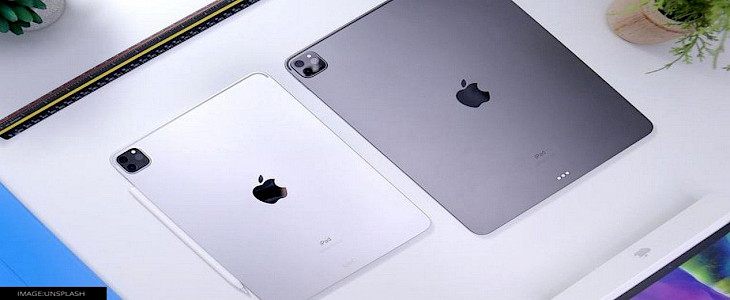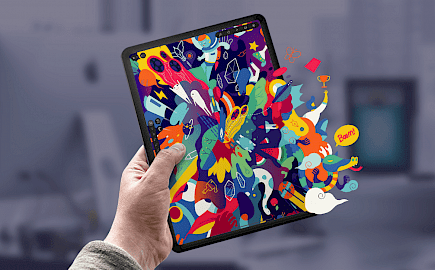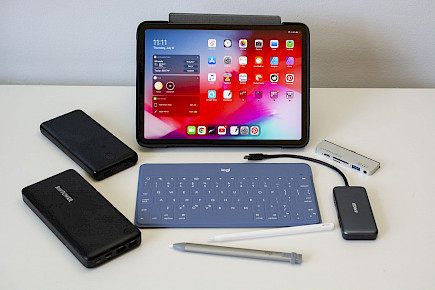
It's been quite some time since Tablets used to be the driving force of electronics. Back when they were released during the mid-2000s Tablets caught everyone’s attention. They were slim, beautiful to look at, and had a great screen for media consumption. But, as of 2021 the craze of Tables has somehow reached a saturation point. But, despite everything every year Apple alone makes nearly a Billion Dollars from iPad sales. But, How?
Have you ever wondered why Apple has been at the top of the tablet market? What made it so special? Why can't other companies surpass Apple? How did Apple become a trillion-dollar company?
Today we are set to answer all these questions. So, without further ado. Let the storytelling begin.
The Old Tale
It is important to look back at Apple's history and origins in order to understand why it has been so successful. Here's a quick overview of Apple's history, starting with the Apple I (a basic motherboard without a keyboard or monitor) and ending with the latest iWatch.
Apple was founded in 1977 by Steve Jobs and Steve Wozniak. The first production run of the Apple I is still a popular collectible. However, it is most known for assisting Apple in obtaining sufficient funding to create the Apple II in 1977, the same year the business was established.
Wozniak was largely responsible for the construction of both computers, while Jobs was in charge of marketing.
The Apple II was the key to the company's success until the mid-1980s, even though the hardware remained largely unchanged. Apple tried updates such as the Apple III and Apple Lisa, but they failed to sell commercially. Apple II was still in production, but Apple was in serious financial trouble by 1980.
Apple made a significant leap forward with the 1984 release of its Macintosh. IBM was able to catch up in the years that passed between the Apple II's release and the Macintosh. Apple's board dismissed Jobs because of the Macintosh's disappointing revenues and internal control struggles.
The Twist of Fate
After leaving Apple, Jobs worked for NEXT Inc. Under Sculley's leadership, Apple began to diversify its product offerings.
Cheaper computers running Windows, on the other hand, served a much wider middle market during the same time period, and Windows profited from strong Intel CPUs. In comparison, Apple appeared to remain stagnant.
Gil Amelio and Michael Spindler, two CEOs, failed to stop the spread of Microsoft operating systems. The new Microsoft operating system, Windows, was quickly becoming the industry standard. Amelio bought NEXT Inc., a company owned by Steve Jobs.
Apple was determined to create a computer that made computing enjoyable and simple with the Macintosh. Jobs was particularly determined to create a user experience that would make everyone want to buy a Mac.
Jobs felt that a genuinely revolutionary product would be independent of the wants and needs of customers. Customers wouldn't be able to appreciate the product's worth unless they used it, he felt. In 1985, Jobs was 12 years ahead of the competition. ’
Apple was already a digital visionary when Jobs overthrew Amelio. With strong marketing campaigns featuring the slogan "Think Different," he launched the iMac. Although Jobs is frequently credited with spending money and effort on marketing, good marketing and branding have always been critical to Apple's success.
Beauty and design were the key differences between the iMac and the other products that followed it.
It wasn't a tower computer with a display like most others on the market. With a blurring backdrop that stretched back from the screen, the iMac resembled a racing helmet. In 1998, the iMac was the most visually attractive computer on the market.
Even though they didn't know it existed until they saw it, the iMac was the machine that everyone desired. Because of the OS update, it was attractive and user-friendly.
Why are Apple’s iPads Ruling the tablet industry?
Apple has been immensely successful for some pretty simple yet impactful reasons:
Firstly, with the iPad lineup, Apple set forward a standard for the whole world. On how a Tablet should be designed. You might compare a 2010 iPad with a new iPad 2021 and will find minimum differences inbuilt quality and design aesthetic. The design of the iPad itself makes it recognizable from other Tabet in the market.

Secondly, all iPads have their own dedicated Operating System. Gone are the days when the iPhone and iPad used the same iOs. Now each Apple product gets its own OS. The iPadOS may not look or feel a lot different than an iOs but, it houses major tweaks like:
- Improved graphics drivers to support the high-resolution screen of iPads.
- Better color depth and sync.
- Tweaked AI features to align itself with the display of a Tablet.
Thirdly, An iPad is a secure device. Unlike Android or CalysOS the iPadOs are not prone to data threats and harbors some of the best-in-class encryption techniques seen among smart devices. This makes iPads a great tool for everyone.
Fourthly, and most importantly. The iPad has updated itself with time. Over the years numerous features of the native iPad have been massively tweaked to make it an era-appropriate device. Todays iPads have compatibility with:
- 5G wired or cellular connection.
- Wireless Sharing/ Bluetooth.
- Numerous accessories like Apple Pencil, Apple Watch, Airpods, wireless keyboard & mouse, etc

Future of iPads
iPad sales declined marginally in the second quarter of 2021. However, the iPads continue to dominate the tablet market with a 36.3 percent market share, according to an IDC report. Apple's closest rivals were outsold by Samsung, Lenovo, and Amazon.

Manufacturers have been fighting to supply processors in the face of global silicone scarcity as demand has increased for tablets and Chromebooks.
Apple will refresh its iPad Mini in the first half of this year after the iPad Air was upgraded in 2020. Apple is trying to please more customers with its iPad line of devices. Apple offers a variety of iPad tablets, from small to large-sized iPad Pros.
Strong CPUs such as the Apple M1 tablet chips are also offered by the company. It is also reported that Touch ID and Face ID will be available on most Apple tablets in the near future.
Apple hopes to capture a larger share of the tablet market with the launch of the iPad mini. Tim Cook, Apple's CEO, said that the iPad's most successful quarter in nearly a decade was its best quarter. It generated revenues of $7.4 billion per quarter. This represents a $6.6 billion increase over the previous year.
Wrapping up
Change is inevitable and it implies for everything that exists in this universe. Tablets had their era and smartphones have theirs. No one knows what might happen tomorrow, what kind of new innovation may take over people’s fascination. But, one thing is for sure. The iPad is not going to leave the market just yet.
It's here to stay.





